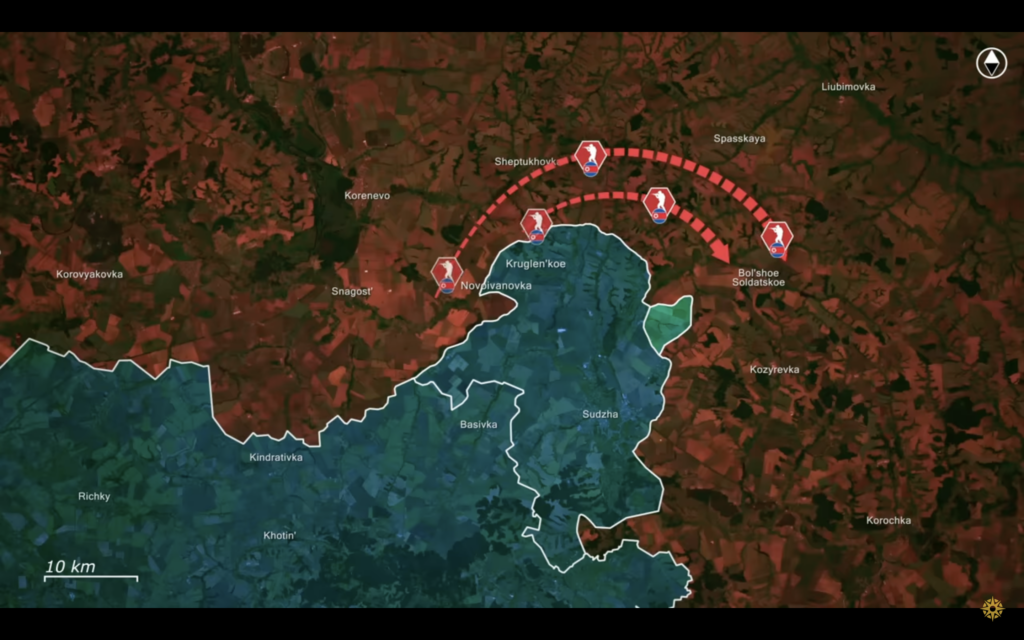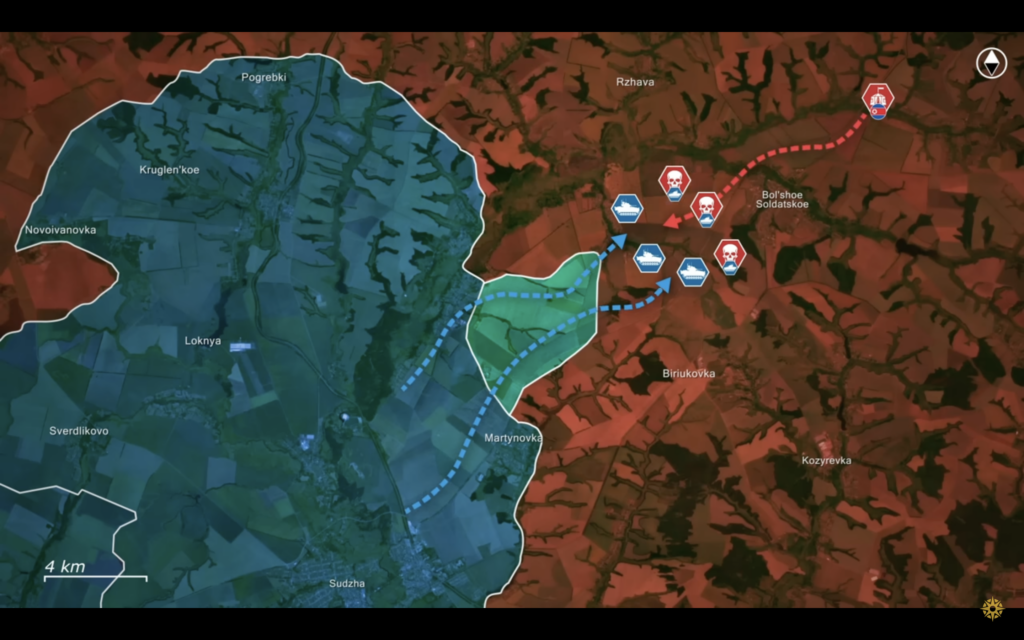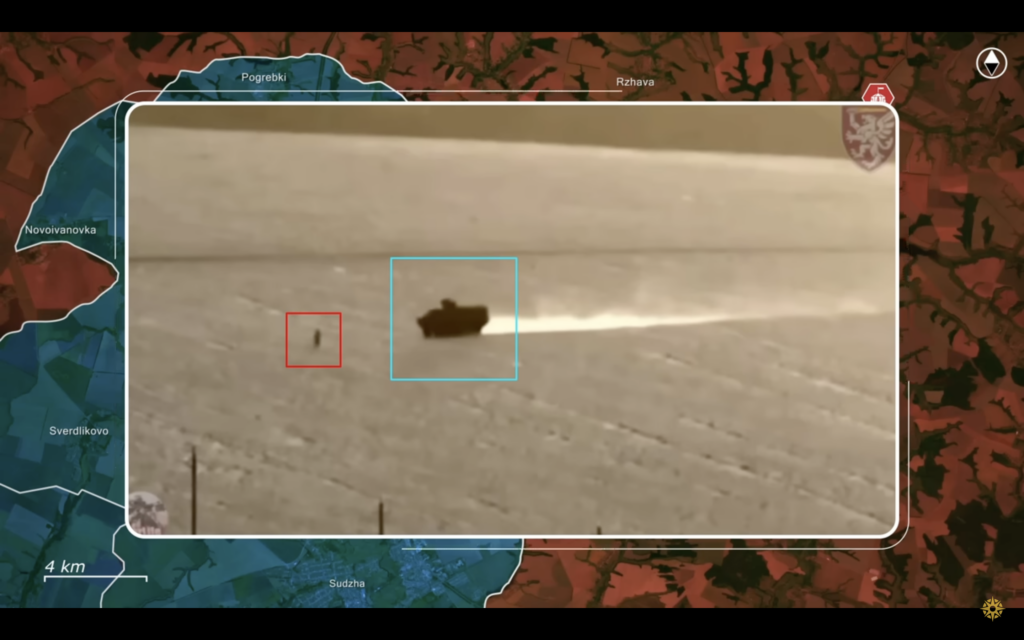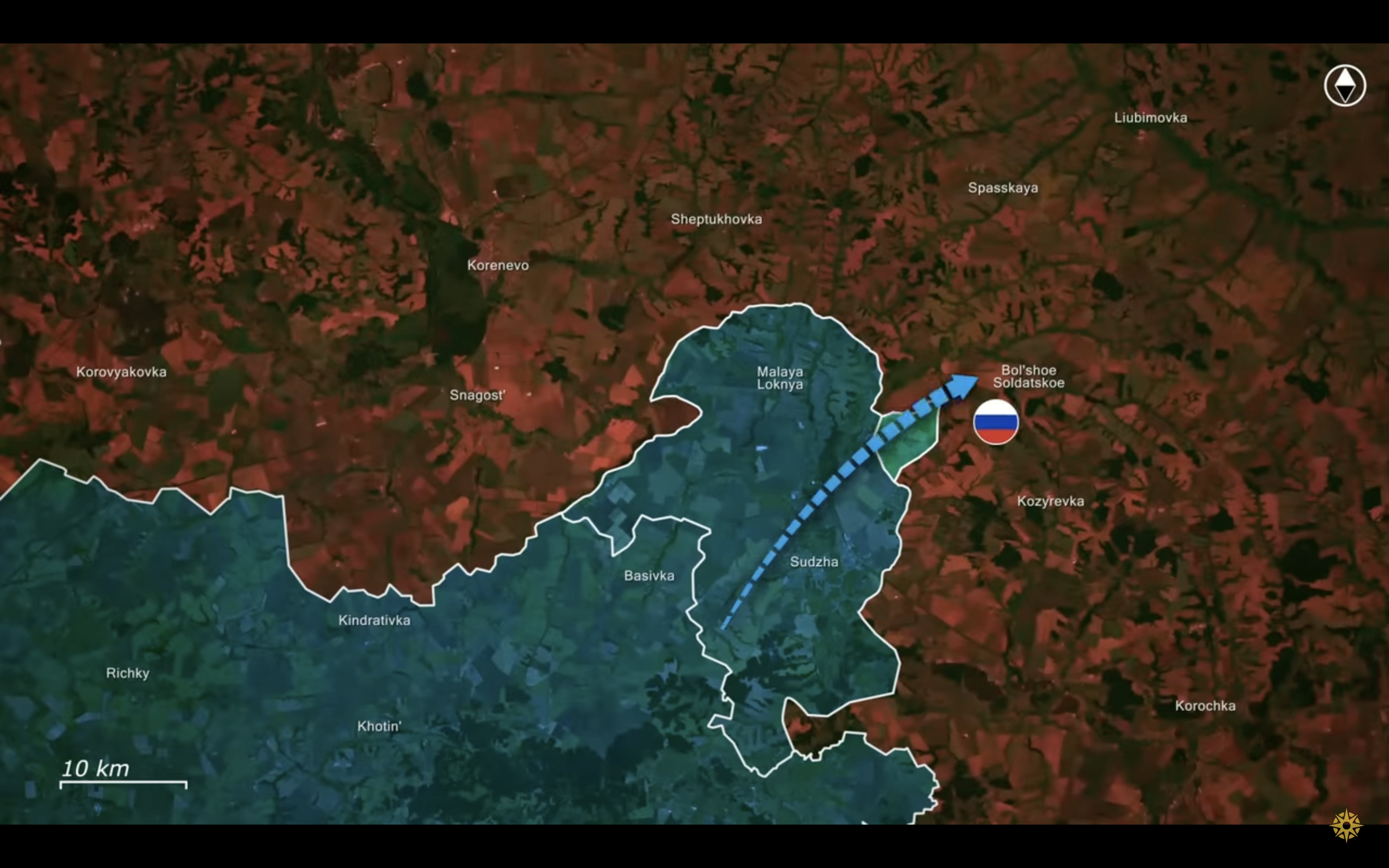Today, there are important updates from the Kursk direction.
Here, the ongoing battle in the Kursk region has seen Russian forces desperately attempting to halt the Ukrainian offensive at any cost, resorting once again to their North Korean allies for help. This left Ukrainians unimpressed as they steamrolled through another North Korean human wave, even after they ran out of ammunition.
The main Russian objective is to prevent Ukrainian forces from penetrating deeper into strategic areas, particularly the larger village of Bolshoye Soldatskoye. Should Ukrainians gain control of this settlement, they would solidify their hold over the salient, complicating Russian logistics and making counteroffensives even costlier and less effective.
This is because the many houses in Bolshoye Soldatskoye and the surrounding settlements provide excellent concealment for both Ukrainian soldiers and their logistics, allowing them to spread out their forces more. The stakes are high, as Ukrainian consolidation in this area would make it significantly harder for Russian forces to slice off sections of the salient or encircle its northern part without incurring devastating losses.

To achieve this goal, Russian commanders urgently redeployed North Korean forces from positions near Novoivanovka and Kruglenkoe to the eastern side of the salient. These forces were thrown into a counteroffensive role in a bid to stall the Ukrainian advance.
This hasty redeployment highlights the growing desperation of Russian troops, who publicly say everything is under control but continue to rely on inexperienced foreign units to bolster their severely depleted ranks.
Using North Korean infantry in mass wave attacks provides a temporary advantage to Russian forces. Though outdated, these "meat waves" can slow down the Ukrainian advance as clearing out these vast numbers from the area requires more time and effort. Such delay could allow Russian forces to deploy reinforcements, using Bolshoye Soldatskoye as a logistical hub.

However, the disadvantages of this approach are stark. North Korean units, already battered and understrength from previous engagements, also lack artillery and mechanized support essential for sustained combat due to their improper integration into Russian forces. As a result, they were forced to rely on infantry assaults against well-prepared Ukrainian mechanized units, which was a strategy destined to fail.
Ukrainian forces capitalized on the weaknesses of the North Korean units. Equipped with advanced drone surveillance and electronic warfare systems, Ukrainian units meticulously dismantled enemy positions and intercepted counterattacks with surgical precision.

North Korean units, already demoralized and poorly equipped, found themselves outmatched. Even in cases where Ukrainian units ran out of ammunition, they found a brutal solution.
One striking example comes from a geolocated video showing how a Ukrainian Stryker armored fighting vehicle, operated by the 80th Air Assault Brigade, is physically running over enemy soldiers after exhausting its ammunition. This bold maneuver underscored the disparity in combat effectiveness between the two sides, as even against Russian units, Ukrainians would immediately be targeted by FPV drones or anti-tank weapons.
Trending Now

The Ukrainian offensive in Kursk serves both military and political objectives. Militarily, the goal is to disrupt Russian operations around the Kursk salient and force Russia to divert troops from other critical fronts, such as Pokrovsk and Kurakhove.
Politically, the offensive aims to expose the weakness of Russian authorities and create domestic discontent. Each Ukrainian gain in Kursk is a symbolic blow to Russian leadership, undermining President Vladimir Putin’s image at home and abroad. Military experts estimate the operation’s objectives to be 30% military impact and 70% political impact, reflecting Ukraine’s strategic approach to warfare.
Overall, the repeated obliteration of North Korean units in Kursk exemplifies Ukraine’s ability to exploit Russian vulnerabilities, such as lack of support with artillery and mechanized vehicles, while maintaining momentum in its renewed offensive.
The battle underscores Russia’s growing reliance on poorly supported units and the unsustainable nature of their defensive strategies. This failure left the North Koreans isolated and vulnerable, reducing their role to little more than cannon fodder.
By advancing on Bolshoye Soldatskoye, Ukrainians threaten to reshape the tactical landscape and deliver a powerful political message; Russian forces are faltering, and their grip is not as strong as projected by the Kremlin.
In our regular frontline report, we pair up with the military blogger Reporting from Ukraine to keep you informed about what is happening on the battlefield in the Russo-Ukrainian war.

